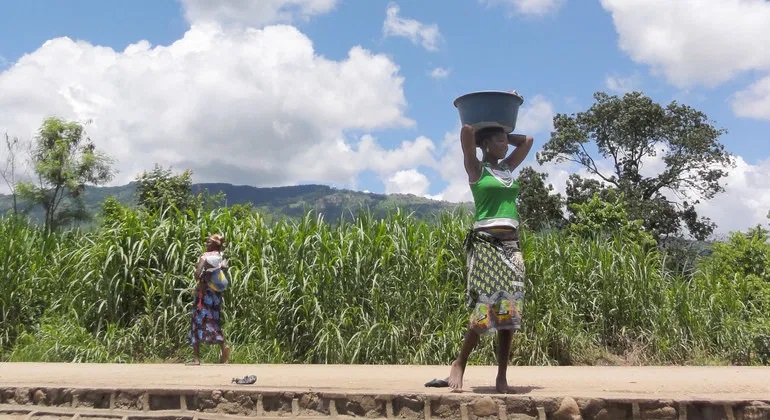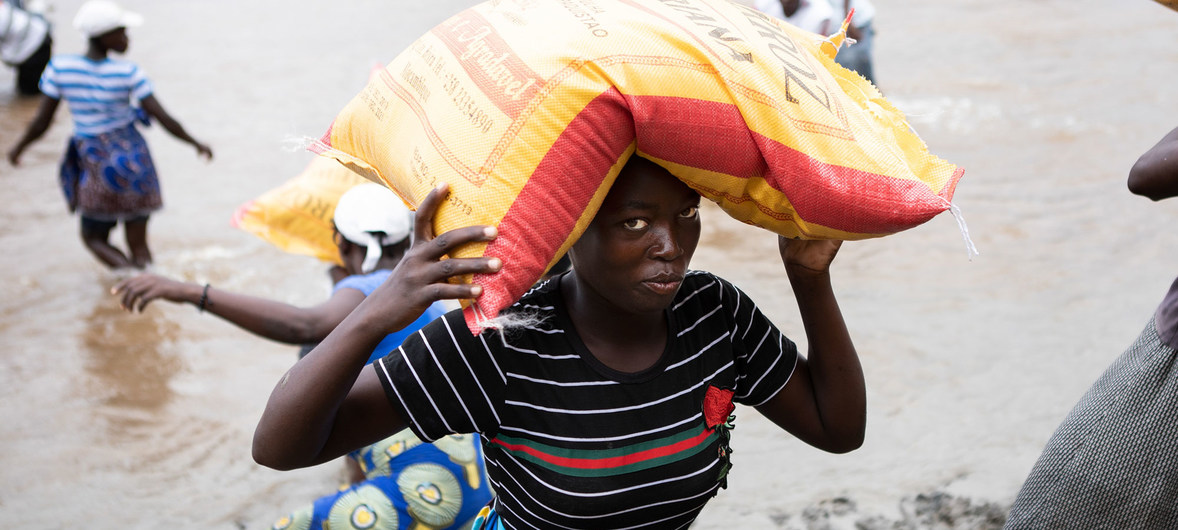Ghana prohibits foreigners from trading gold in the country starting May 1
Africa climate change report reveals heat rising north and south, Sahel getting wetter

Drought in Africa will adversely impact the productivity of major cereal crops, says a report launched by WMO on Monday. [Photo: WMO/Cornel Vermaak]
- Africa needs to prepare better for climate change by responding to a wide range of potential risks, a multi-agency report led by the UN World Meteorological Organization (WMO) said on Monday, the first in a series of continent-by-continent assessments.
The African continent is warming quickly, and climate change is expected to disproportionally affect every aspect of life on the continent, from human health to food security and economic growth, according to the World Meteorological Organisation’s (WMO) first climate report on Africa.
Temperatures in Africa have increased over 1ºC compared with the average between 1901 and 2012, and warming in large areas of the continent may exceed 2ºC from pre-industrial times by 2080 to 2100 if emissions continue at their current levels, according to the report released on Monday and co-ordinated by the WMO.
“We know that climate change impacts we suffer today are consequences of development choices that countries, mainly developed, adopted over the years,” said Vera Songwe, executive secretary of the UN Economic Commission for Africa. “Africa is more vulnerable than most and, even if it is the least responsible, it also has the most viable solutions.”
The continent has already seen an increase in heatwaves and erratic rainfall patterns. Heat and drought are affecting agriculture production, increasing pest damage and disease. Climate change and climate variability, together with conflicts, instability and economic crises, are listed as key drivers of a recent increase in hunger in Africa.
Africa needs to prepare better for climate change by responding to a wide range of potential risks, a multi-agency report led by the UN World Meteorological Organization (WMO) said on Monday, the first in a series of continent-by-continent assessments.
“In recent months we have seen devastating floods, an invasion of desert locusts and now face the looming spectre of drought because of a La Niña event. The human and economic toll has been aggravated by the COVID-19 pandemic,” WMO Secretary-General Petteri Taalas said in a statement.
Filling the gap
The report aims to fill a gap in reliable and timely climate information for Africa, which translates into a lack of climate-related development planning, said Vera Songwe, Under-Secretary-General, and Executive Secretary of the United Nations Economic Commission for Africa (UNECA).
Africa has been warming progressively since the start of the last century, and in the next five years, northern and southern Africa are set to get drier and hotter, while the Sahel region of Western Africa will get wetter, WMO’s Regional Strategic Office Director, Filipe Lucio, told a press conference.
“Overall, Africa needs to take action. Action is needed today in terms of adaptation, but also is needed tomorrow in terms of mitigation”, Lucio said.
The agricultural sector is key to building climate resistance, since it is the dominant employer and it relies on the use of water and energy – both heavily implicated in climate change, he said.
Northern and southern areas under threat of aridity and desertification would benefit from reforestation, which helps to prevent water runoff and creates vegetation which supports the hydrological cycle.
At todays launch of the #StateofClimate in #Africa report, @FAOs @ZitouniOuldDada highlighted the importance of #data & the FAO @googleearth #HandinHand initiative to increase farmers access to realtime weather data:https://t.co/JO3Jqg6tcc @WMO @_AfricanUnion @ECA_OFFICIAL pic.twitter.com/UpJM2oCWkX
— FAO Climate Change (@FAOclimate) October 26, 2020
Policy recommendations
Policy changes are also recommended in transport, energy, infrastructure and industry. Financing has improved with the establishment of a UN-backed Green Climate Fund but there are still limitations in terms of the continent’s ability to tap into such funds, he added.
Climate change has contributed to a jump in food insecurity, mosquito-borne disease and mass displacement in the past decade, and the rise in sea levels has led to unusual weather patterns such as Tropical Cyclone Idai, which hit Mozambique, Malawi and Zimbabwe in 2019.

One year after Cyclone Idai, people in the Beira district of Mozambique are still struggling to get back on their feet.
It showed the need for communities to learn about the risks and for impact-based warnings about the appropriate actions to take.
Cautionary tale
A day after the cyclone made landfall, it appeared to have dissipated and people thought the worst was over. But then disaster struck when flooding followed, overwhelming Mozambique’s major port city of Beira, Lucio said.
“People were asked to find refuge in appropriate places but the city of Beira was never built to withstand a category-5 tropical cyclone. So that means the building codes need to be changed, but the building codes cannot be changed using what tropical cyclones used to be like in the past.
“They need to have forward looking analysis to anticipate the trends into the future and start designing infrastructure and other systems taking into account the changing nature of these tropical cyclones.”
- Read the full State of the Climate in Africa 2019 report HERE













Leave a Reply
Be the First to Comment!
You must be logged in to post a comment.
You must be logged in to post a comment.